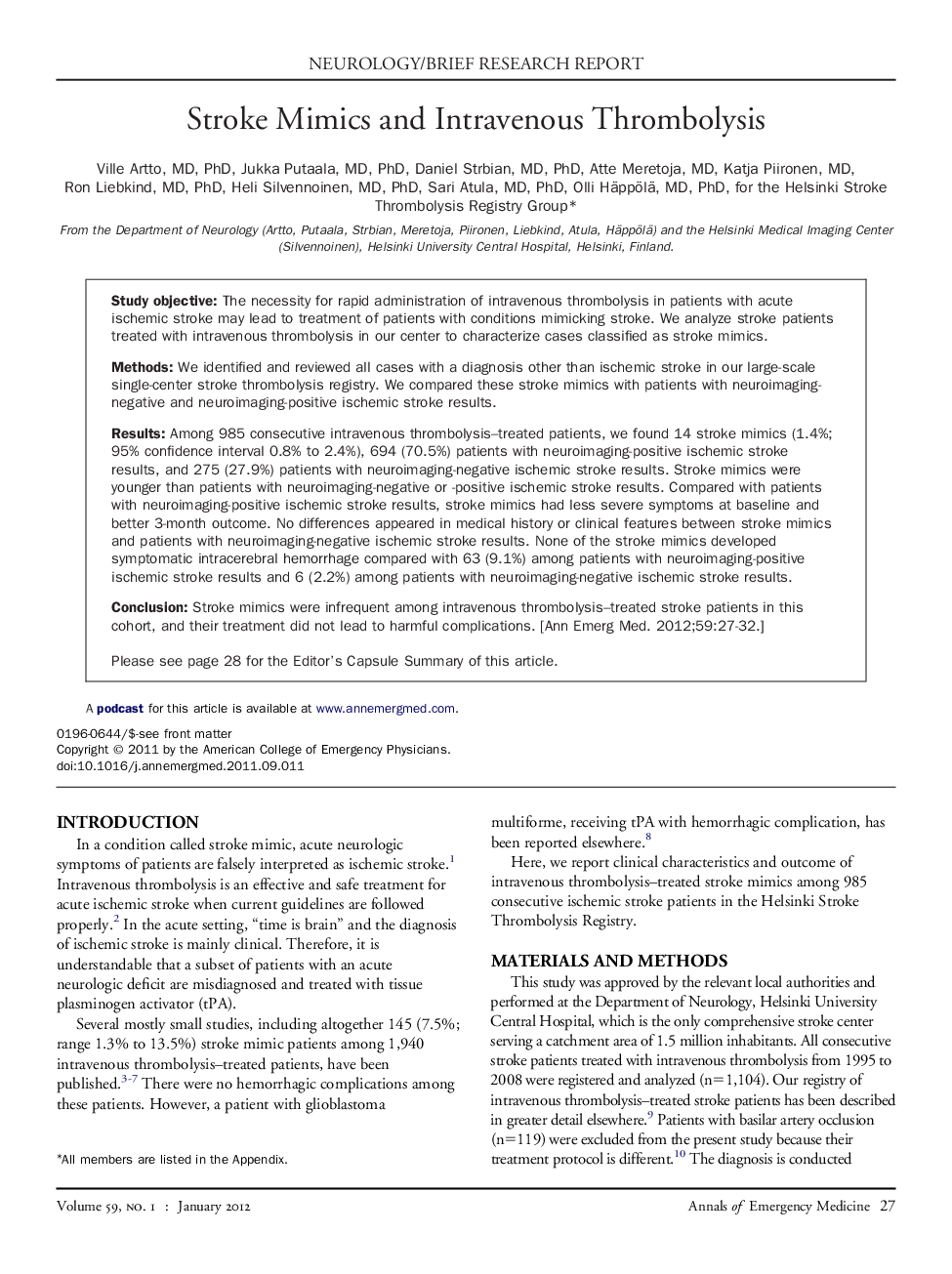| Article ID | Journal | Published Year | Pages | File Type |
|---|---|---|---|---|
| 3230327 | Annals of Emergency Medicine | 2012 | 6 Pages |
Study objectiveThe necessity for rapid administration of intravenous thrombolysis in patients with acute ischemic stroke may lead to treatment of patients with conditions mimicking stroke. We analyze stroke patients treated with intravenous thrombolysis in our center to characterize cases classified as stroke mimics.MethodsWe identified and reviewed all cases with a diagnosis other than ischemic stroke in our large-scale single-center stroke thrombolysis registry. We compared these stroke mimics with patients with neuroimaging-negative and neuroimaging-positive ischemic stroke results.ResultsAmong 985 consecutive intravenous thrombolysis–treated patients, we found 14 stroke mimics (1.4%; 95% confidence interval 0.8% to 2.4%), 694 (70.5%) patients with neuroimaging-positive ischemic stroke results, and 275 (27.9%) patients with neuroimaging-negative ischemic stroke results. Stroke mimics were younger than patients with neuroimaging-negative or -positive ischemic stroke results. Compared with patients with neuroimaging-positive ischemic stroke results, stroke mimics had less severe symptoms at baseline and better 3-month outcome. No differences appeared in medical history or clinical features between stroke mimics and patients with neuroimaging-negative ischemic stroke results. None of the stroke mimics developed symptomatic intracerebral hemorrhage compared with 63 (9.1%) among patients with neuroimaging-positive ischemic stroke results and 6 (2.2%) among patients with neuroimaging-negative ischemic stroke results.ConclusionStroke mimics were infrequent among intravenous thrombolysis–treated stroke patients in this cohort, and their treatment did not lead to harmful complications.
